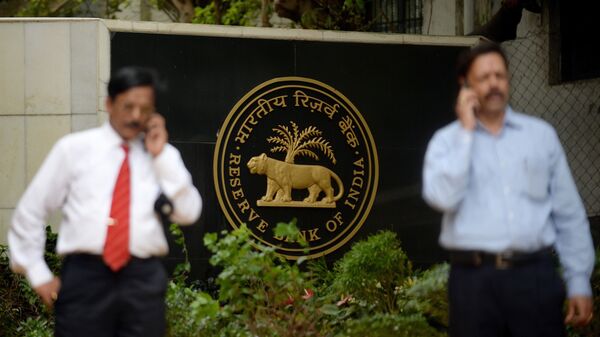In the run-up to the Budget, scheduled to be unveiled on 1 February, India’s central bank - the Reserve Bank of India (RBI) - has raised concerns about the ballooning Non-Performing Assets (NPAs), ie bad debts, in the banking sector.
The RBI said in a recent report that bad debts in the sector are likely to grow to more than 13.5 percent of the total loans and advances of about $1.36 trillion in September 2021. This is almost twice the 7.5 percent of bad debt the RBI estimated in September last year.
The central bank’s financial stability report released on Monday states that gross NPA levels in the worst-case scenario may escalate to 14.8 percent until September this year.
That, a section of analysts believe, is reason enough to consider the banking sector's woes in the forthcoming budget.
A former governor of the RBI told Sputnik on condition of anonymity that even at these levels of bad debt in the banking sector, the regulatory capital of the banks may remain intact.
“Nonetheless, government needs to use the opportunity thrown by the COVID–19 pandemic to kick-start banking-sector reforms”.
When asked about the key reforms that urgently need to be adopted in the sector, the former RBI chief said the government must think in terms of setting up a bad bank.
The question, however, is how will the bad bank be funded, given the shortage of revenue the government is facing because of the pandemic. The point is the government at least needs to start thinking in this direction, the governor added.
“One of the ideas could be to begin with sectoral stress with a bad bank focused only on the bad assets of a particular sector”.
The government, meanwhile, will have to find sources for bank recapitalisation in the upcoming budget. In the financial stability report, the RBI has called for “proactive building up of adequate capital to withstand possible asset quality deterioration.”
Over the past couple of years, the Indian government has injected $43.15 billion capital into the public-sector banks.
Acknowledging that the Indian banking sector is overburdened with bad debt that needs to be tackled without delay, senior financial journalist Geetu Moza told Sputnik, “Both the recapitalisation of banks and the setting up of a bad bank will need sovereign funding, which the government may not be able to provide amid the pandemic. But privatisation of the public sector banks (PSBs) is likely to be intensified.”
The government may sell its stake in the smaller public-sector banks, Moza added.
The AQR was carried out by the RBI in September 2015 and its auditors to identify the amount of bad debt in the banking system.
According to the Care Ratings, when the AQR was ordered, India’s NPAs stood at $48 billion. It however grew to $81 billion, the credit rating agency's data reveals.







